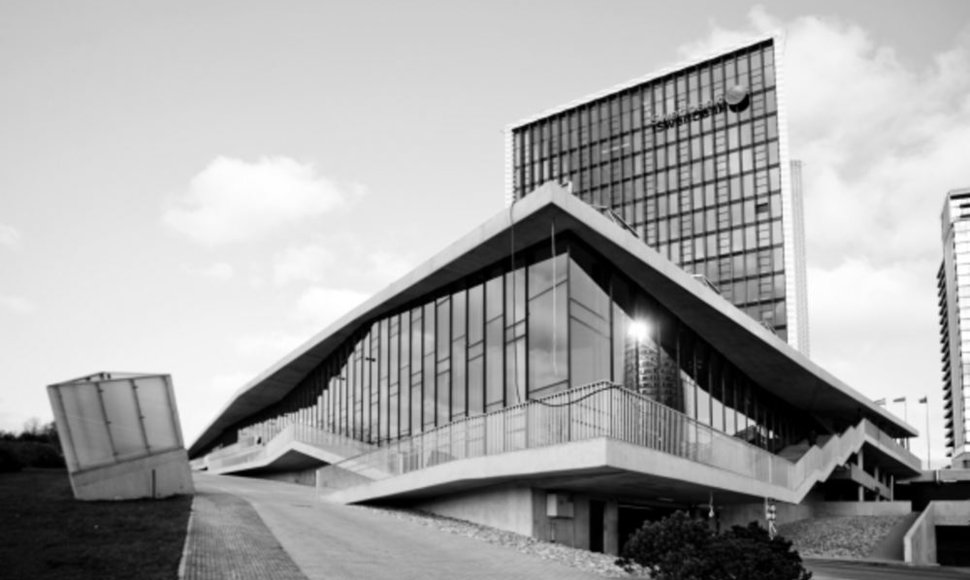Money has no identity. Therefore, it has not been obvious to the world's stock exchanges and banks how to define and symbolize their own identity. Monetary institutions' architecture is a good reflection of that, often using 'stolen' symbols from classical architecture, objects, exaggerated dimensions, etc.
Through the centuries, financial institutions sought to find themselves. But have they succeeded? The way I see it, not really. I'm afraid, actually, that their architecture of today indicates that something is wrong with the very principles of money power.
Leaders of the Soviet Union, all as one, tried to create communist architectural ideals. Steel and concrete, distinctive shapes, forms of power. It was like watching the hammer and sickle in the buildings’ architecture.
I see some similar architectural thinking in capitalism today. Financial power institutions have tried many “styles”: Greek columns, Roman ornaments, gold, shiny and/or black, opaque facades in mafia-style.
Ponte Vecchio, Florence
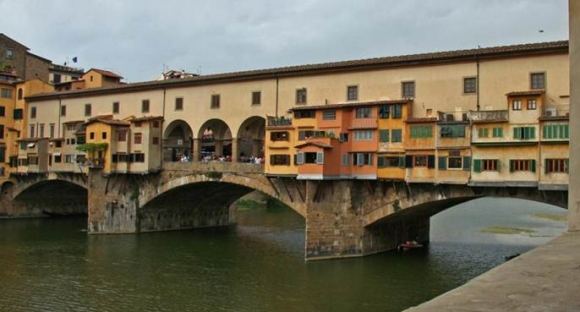 |
| VilNews.com nuotr./ponte vecchio |
It was right here that the world banking system started in the Middle Ages. The Ponte Vecchio ("Old Bridge") is a Medieval stone closed-spandrel segmental arch bridge over the Arno River, in Florence, Italy, noted for still having shops built along it, as was once common. Butchers initially occupied the shops; the present tenants are jewellers, art dealers and souvenir sellers.
A curious fact regarding the words “bank” and “bankruptcy” is that they derive from the economic activity on Ponte Vecchio. The stand, table or bench that held the merchants goods, was called a "banco" (“bench”). When a merchant was no longer able to pay his taxes, his banco was literally broken, or "rotto," into pieces, therefore creating the term "bancorotto" which translates into "bankruptcy" in English. All initiated by the famous Medici family.
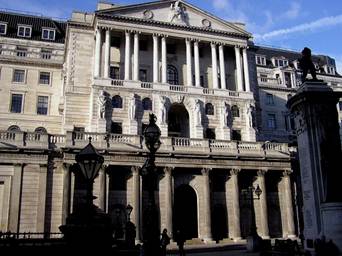 |
| VilNews.com/Bank of England |
Bank of England
Bank of England is the central bank for the UK and the model that today's central banks around the world have originated from. The headquarters in London was built over the years 1925-1939. What you see is a building with numerous elements from ancient architecture, powerful symbols of power and wealth. The building's lower part looks like a dark, impenetrable wall. Bank architecture came to resemble an odd mix of power symbolism and elements borrowed from ancient cultures.
Modern examples
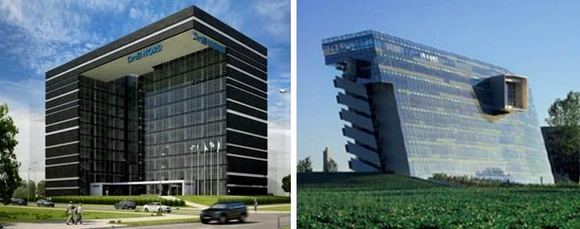 |
| VilNews.com/Banks in Riga and Undine |
Left, is a brand new bank building in Riga, Latvia. A building that would have made the Soviet architectural ideologues very pleased. The power symbolism is overwhelming. No humility, beauty or local adaptation. Only raw power. Probably also an attempt to mimic Mitterrand’s new 'triumphal arch' in Paris. But what is it they triumph over here? That the architecture of communism ideals has been resurrected, now symbolising a stronghold of capitalism? And that in Latvia, a country that just recently managed to break away from the Soviet Union's mighty power claws.
Right, a new bank building in Udine, Italy. Good symbolism that clearly shows the state of the Italian economy, architecture of truly rare honesty.
Jewish banks in Lithuania
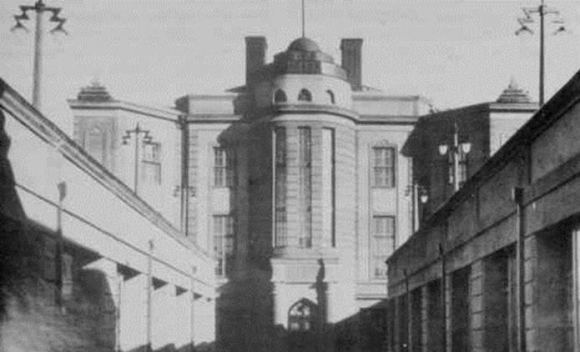 |
| VilNews.com/The Central Jewish Bank. Kaunas, 1923 |
In pre-war Lithuania, many members of the Jewish middle class, especially the educated strata who had already experienced the establishing of Jewish autonomy to some extent, mobilized their resources in order to strengthen the social economic basis of the Jewish masses and their livelihood. With the blessing and initiation of the Economics Committee at the Ministry for Jewish Affairs and with the assistance of the “Foundation,” a national financial system of co-operative
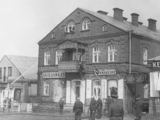 |
| VilNews.com/Ukio bankas in Utena, 1934 |
credit societies was established. By the end of 1920, these were already active in 44 cities and towns and were named “People's Bank” (in Yiddish, Folksbank). In addition to making positive impact on local economic activity (extending loans, etc), they were also of importance in the social and cultural sphere. In a number of places, the community bodies and other organizations also used the bank building. There were also cases of the bank granting study scholarships and prizes for cultural activities.
In order to co-ordinate and regulate the activities of the People's Banks in time of need and crises, a central institution was established in 1921, formally called the “Central Jewish Bank for the Encouragement of Co-operation.” 71 People's Banks throughout the country were linked to it, and the number of (dues paying) members reached 11,000. Over the years, the capital assets of the institutions increased, as did the amount of deposits and savings. Thanks to that, the conditions for granting loans to members and public institutions were loosened. In 1930, 85 People's Banks existed in Lithuania with 22,262 members. In that year, 11,953 loans were granted to them and to others in a total amount of 10,249,159 Lit (approximately one million Dollars).
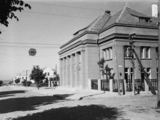 |
| VilNews.com/The Kedainiai bank of 1933 |
Although the People's Bank was open to non-Jews as well, the share of gentiles was no more than 5%. Work in the offices, correspondence and daily routine was conducted in Yiddish, and this was also true of the national conventions and conferences which took place every few years. This was, therefore, a Jewish banking system spread throughout the cities and towns of Lithuania. At the time, the total deposits amounted to 14,113,413 Lit (approximately $1.4 million), of which 46% came from members, 16% from institutions and 48% from non-members. Taking into consideration members' families and all others who required the People's Banks' services, and that of its associates, we can conclude that they served about two thirds of the Jewish population. Unlike similar Lithuanian banks, that enjoyed cheap governmental credit, the People's Banks had to depend on deposits only. In 1933, a special bank was established to assist Jewish farmers (Yiddisher Landwirten Bank).
The central office was in Kaunas with 31 branches spread out in towns throughout the country.
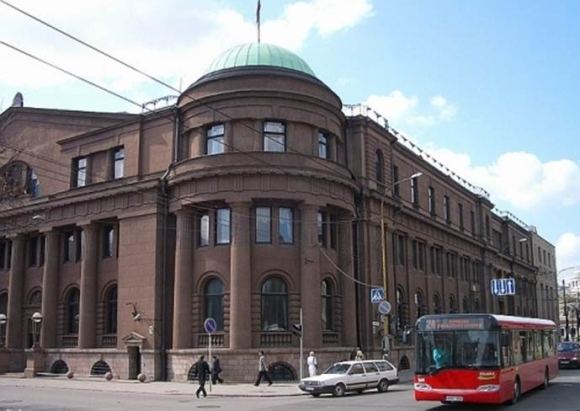 |
| VilNews.com/The inter-war Bank of Lithuania – 25 Maironio str. Kaunas. Very impressive architecture of neoclassicist style. The Bank of Lithuania (1924–1938) was designed by Lithuanian professor Mykolas Songaila, though it was an unknown architect from Paris that won the international competition for the project of the bank building in 1924. The French architect’s project was deemed too complex and expensive by the commission. The building is still in a good condition today. There is a small exhibition of Lithuanian banknotes and coins of the First Republic time inside.a |
Post-Soviet Banking
After the liberation in 1991, Lithuania inherited the monobank system of the former Soviet Union, with specialized state banks serving specific branches of the economy. They quickly established a central bank at the centre of their banking system. They were weak in bank management and lacked staffs with modern banking skills, and no system had an appropriate legal, regulatory, or supervisory framework governing the banks. In some instances, fraud and corruption prevailed, encouraged by the relatively permissive regulatory and supervisory environment for banks that existed in the Baltics. All three had to decide what to do with remnants of the Soviet banking system while encouraging growth of the new private banking sector.
Estonia and Lithuania reconstituted the specialized Soviet banks as national state banks and began to privatize them. In some instances, the state still retains an ownership stake. In Lithuania, the state increased its share as part of a rescue effort for some former state banks. Latvia, by contrast, reconstituted the savings bank, then privatized branches of the remaining banks. The residual branches were merged into one bank, rehabilitated, and then subject to formal privatization.
The saving banks were privatized. In the early stages, the three private banking systems were similar and grew rapidly. All three have had liberal policies toward licensing new commercial banks, believing that more banks would generate competition needed to drive down deposit and credit rates, and provide the capital needed to fuel the emerging private sector.
Many new private banks were established by enterprises that wanted access to cheaper funding than was available from other banks. Little thought was at first given to the implications of this policy for banking safety and supervision.
"New" banks in old buildings
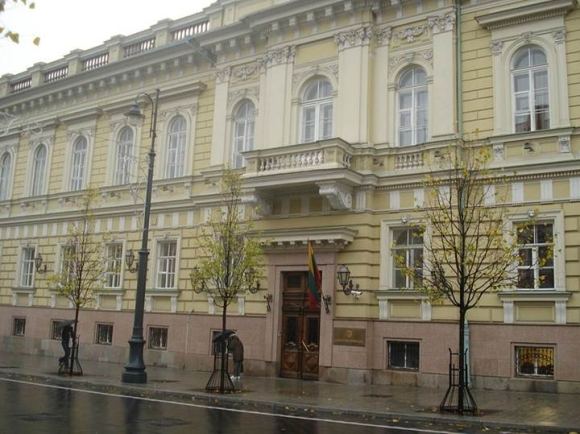 |
| VilNews.com/Bank of Lithuania |
Bank of Lithuania headquarters in Gediminas Avenue, built by the order of Józef Montwiłł in 1889–1891. The Bank of Lithuania is the central bank of the country, established in 1922. It has the exclusive right to issue the currency of the Republic of Lithuania into circulation and to withdraw it. The principal objective of the Bank of Lithuania is to maintain price stability, i.e. keep inflation as low as possible. In implementing this objective, the Bank of Lithuania conducts monetary policy, supervision of credit institutions, management of foreign reserves and performs other functions.
 |
| VilNews.com/DnB Bank, Nordea Bank, and SEB Bank headquarters. |
DNB Bank has its headquarters in Basanavičiaus street in central Vilnius, in a beautifully renovated old building which seems, however, hardly practical.
Nordea bank is headquartered in Didžioji str. in Vilnius centre. Nicely renovated Old Town building was built in 1913, following a project by M.Prozorov.
SEB Bank headquarters, 12 Gedimino str, are housed in a nicely renovated building from inter-war years (1937), the Polish period of Vilnius history.
"New" banks in new buildings
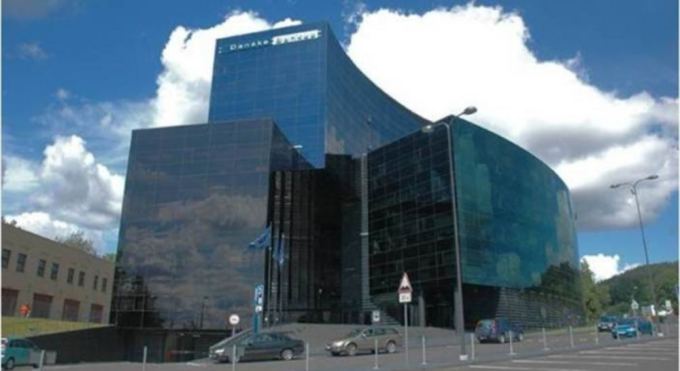 |
| VilNews.com/Danske Bank |
Danske Bank headquarters, 2 Saltoniškių str., just outside the centre of Vilnius.
A good example of what I earlier called ‘mafia architecture’ – dark windows that cover a shapeless building. Indicates power, money, and no transparency.
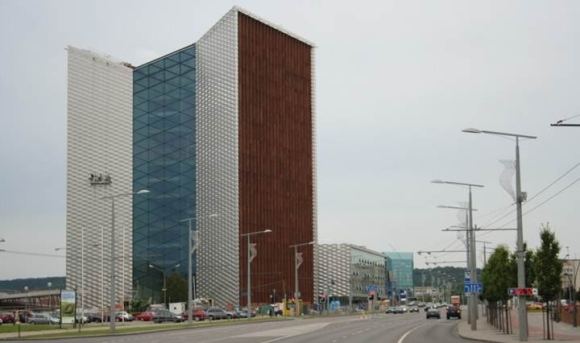 |
| VilNews.com/SWEDBANK. |
Swedbank headquarters, 20A Konstitucijos str, just outside the centre of Vilnius, designed by A.Ambrasas, V.Adomonytė, T.Eidukevičius, D.Malinauskas, 2009. Nice building with warm and light colour combinations. But what is the shape supposed to tell us? Two huge loudspeakers?
